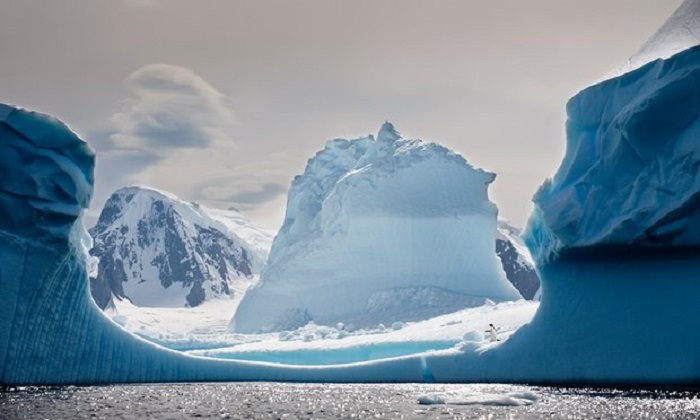Antarctic peninsula temperatures have fallen, study shows

The scientists said the change is related to local changes in wind patterns, partly driven by the recovery of the ozone hole. If carbon emissions continue to rise at the current rate, they expect temperatures on the peninsula to rise by several degrees by 2100.
Prof John Turner of British Antarctic Survey (BAS), who led the study published in Nature, said: “The Antarctic peninsula climate system shows large natural variations, which can overwhelm the signals of human-induced global warming.”
Globally, June was the 14th month in a row to set a record high temperature and 2016 is expected to be the hottest year recorded, beating the previous record set in 2015.
In Antarctica, another paper published last week showed that the retreat of 90% of the Peninsula’s glaciers since 1940 is mostly due to warming of the oceans, not the air. Previous work has shown the collapse of parts of the giant Antarctic ice cap may already be unstoppable, potentially causing 4 metres of sea level rise in coming centuries.
Prof Andrew Shepherd, at the University of Leeds, said: “It’s completely unsurprising that in any long-term temperature record there will be a decade of measurements that buck the trend. There are few scientists left who believe that atmospheric warming will be the main cause of Antarctic [ice] instability over the next century. The real threat is ocean warming, which has triggered widespread loss of ice just around the corner in west Antarctica and we should not lose sight of that.”
Prof Nerilie Abram, at the Australian National University, said: “This new research definitely doesn’t imply that warming of the planet has stopped. But it is a good example of how the long-term changes in our climate also have a layer of year-to-year variability on top that can cause some decades to warm particularly quickly and others to apparently not warm at all.
She said: “For a remote place like Antarctica, where climate measurements are especially short and those year-to-year swings in climate are very large, our records really aren’t long enough yet to see the full picture of human-caused climate change.”
Along the Bellingshausen Sea coast of West Antarctica, ice has been retreating inland or being lost to the sea as show this two views from February 18, 1975 and March 2, 2015. Scientists knew this, but they lacked a full picture of the scale. Now a team of researchers has compiled a Landsat-based data set and found that such losses have been going on for at least the past four decades and along the vast majority of this coast. Credits: Nasa
In June, levels of the carbon dioxide in the atmosphere above Antarctica rose past the 400 parts per million milestone, contrasting with the pre-industrial level of 280ppm, said Robert Mulvaney, an ice core researcher at BAS and co-author of the Nature paper.
“Climate model simulations predict that if greenhouse gas concentrations continue to increase at currently projected rates their warming effect will dominate over natural variability - and the cooling effect associated with recovering ozone levels - and there will be a warming of several degrees across the region by the end of this century,” he added.















































